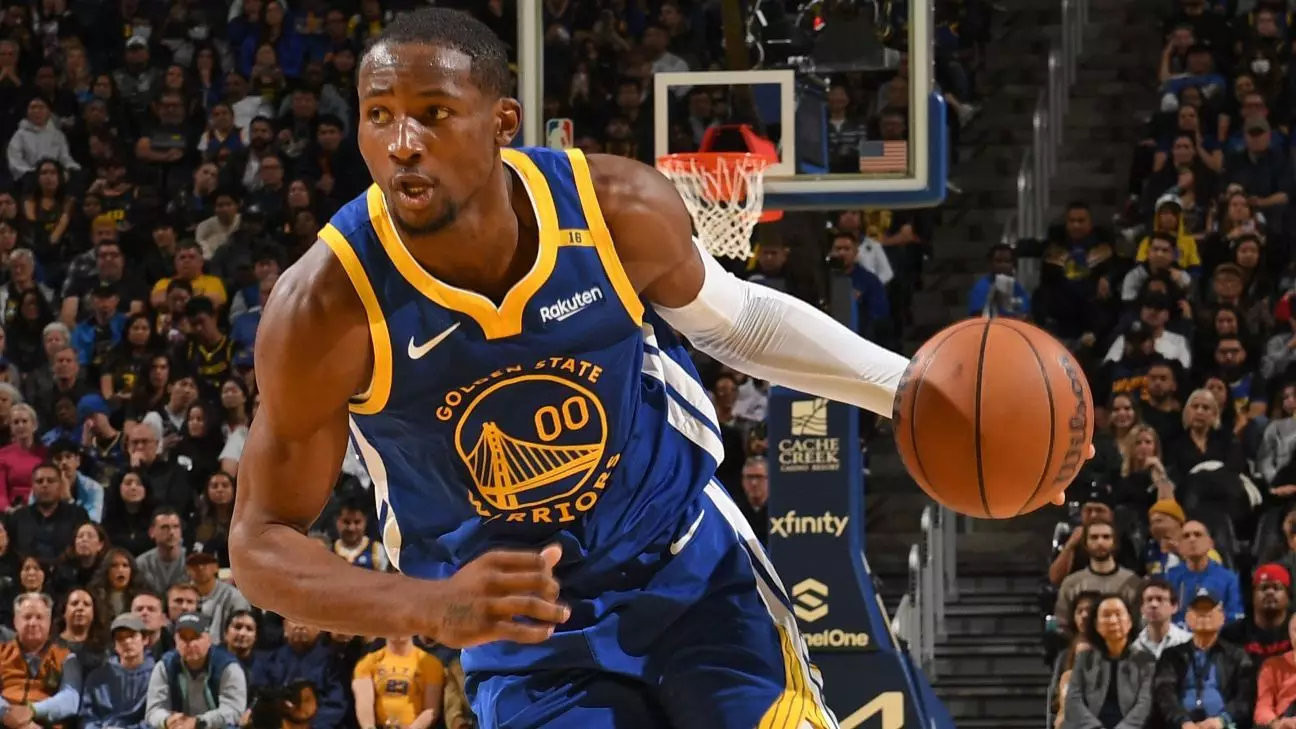In the modern NBA landscape, where financial maneuvering and roster construction collide, the case of Jonathan Kuminga exemplifies the complex dance between young talent and franchise values. Kuminga’s reluctance to accept the Golden State Warriors’ latest offer signifies more than a mere contract dispute; it exposes the shifting power dynamics between burgeoning players seeking clarity and teams desperate to maximize their investment. His stance reflects a broader trend: rising stars demanding a seat at the table, not just as developable assets, but as integral pieces vital for team success.
Kuminga’s negotiations serve as a mirror to a league where player agency has gained unprecedented momentum. The Warriors, despite their historic success and championship pedigree, find themselves at a crossroads—balancing the desire for cost-efficient talent against the need to keep promising players motivated and engaged. However, their approach seems increasingly cautious, bunkered behind standard offer sheets and rigid trade demands, perhaps underestimating Kuminga’s growing confidence in his worth and potential.
The Broader Market: An Unforgiving Environment for Restricted Free Agents
The sluggish market for restricted free agents like Kuminga highlights a deeper economic malaise that organizations face. The NBA’s cap space crunch, coupled with cautious franchise strategies, means that talented young players often remain in limbo unless their teams are willing to compromise heavily. Kuminga’s situation underscores a harsh reality: despite talent, the financial landscape limits opportunities, compelling players to push for leverage—be it via sign-and-trade options or holding out for better terms.
The Warriors’ insistence on recouping a first-round pick in any potential trade, along with the absence of suitors willing to part with valuable assets, exemplifies the brutal calculus teams use to minimize risk. Phoenix’s lack of a first-round pick or Sacramento’s hesitance reflect the broader reluctance—teams want proven, cost-controlled talent, and Kuminga’s explosive playoff performances are not enough to break through the cautious veneer of their decision-making processes.
Future Pathways: Value and Promise Beyond the Contract
Kuminga’s unresolved situation reveals a significant tension—his desire for a larger, more guaranteed role versus the Warriors’ current valuation of his contributions. This is where the narrative shifts from pure dollars to long-term potential. Kuminga’s exploratory stance in free agency and willingness to entertain a sign-and-trade signals a young player who is no longer content to be a developmental project but wants recognition as a cornerstone piece.
Furthermore, his contemplation of accepting the Warriors’ qualifying offer illustrates strategic patience. By holding onto a one-year, $7.9 million deal, Kuminga maintains maximum flexibility and control—an unprecedented move for a young player seeking clarity on his future. This tipping point in negotiations is emblematic of a broader shift: players increasingly prioritize their career trajectory, sometimes at the expense of immediate financial gain, betting on continued development and greater long-term stability.
The Bigger Basketball Picture: The Warriors’ Strategic Outlook
While Kuminga’s saga dominates the offseason headlines, the Warriors are also charting a broader course—sourcing experienced veterans like Al Horford and young sharpshooters such as Seth Curry and De’Anthony Melton. These targeted acquisitions underline a pragmatic approach: surround their core with reliable role players capable of contributing immediately while waiting for Kuminga’s standstill to resolve.
The team’s strategy seems to hinge on a delicate balance—investing in established veterans who can fill immediate gaps, yet remaining open to incorporating Kuminga into the fold once the negotiations align. Yet, this wait-and-see approach could also backfire if Kuminga chooses to explore other opportunities more aggressively, especially if his desire for a larger role remains unfulfilled.
Personal and Professional Growth in the Limelight
Kuminga’s case also raises questions about how young athletes view their careers. His playoff burst against Minnesota demonstrated his capacity for high-impact moments, fueling his confidence in demanding a more prominent role. His memory of being sidelined in the playoff opener against Houston haunts him, illustrating how early setbacks can influence future decisions.
His decision to explore all options—waiting for better offers, considering a mid-season trade, or accepting the qualifying offer—reflects a maturing mindset: valuing his worth over immediate security to ensure he is positioned for long-term success. Kuminga appears to seek a narrative where he can claim ownership of his development and impact, rather than being subordinate to the traditional development pipeline.
Kuminga’s standstill isn’t just a contract dispute; it’s a window into the evolving identity of NBA stars. Young talents now see themselves as not just future assets but as current catalysts for success. The Warriors’ cautious approach, while understandable, risks missing out on a player who could be a pillar of their future if given the right environment. Conversely, Kuminga’s strategic patience underscores a new era where players demand respect, clarity, and control—elements that might reshape how contracts and roster decisions are approached across the league.
In this turbulent dance of ambitions and finances, Kuminga’s story remains a compelling narrative of potential, patience, and the pursuit of true value—on and off the court.


Leave a Reply